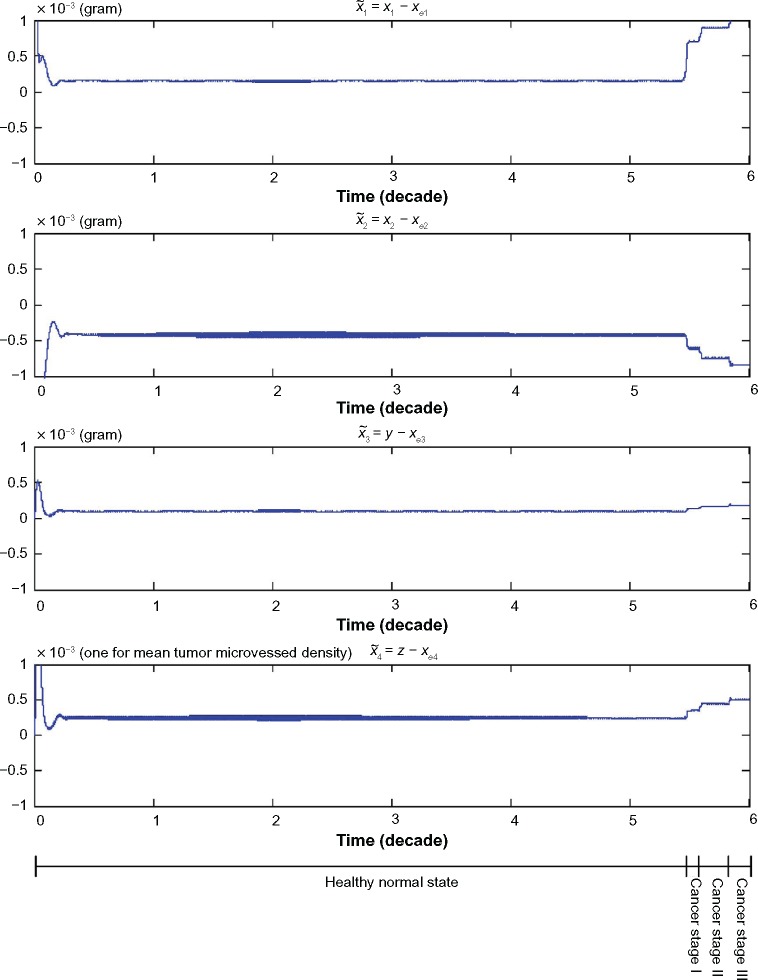Figure 2.
The trajectories of the nonlinear stochastic biological network of lung cancer cells in carcinogenesis with states , suffering from Poisson genetic and epigenetic variations with Poisson counting process as shown in Figure 3 and environmental disturbance v(t). Even the network robustness is enhanced by evolutionary game strategy; however, it is seen that the phenotype will shift to another phenotype when the neutral phenotype variations are accumulated to a sufficiently large amount such that the phenotypic robustness criterion in (42) or (57) is violated (ie, the normal phenotype of the lung cancer-associated network is shifted from the equilibrium point at xe = [6.19 × 10−11 2.20 × 10−3 0 9.88 × 10−6]T to the phenotype of first stage lung cancer state at the equilibrium point at 54.5 years of age, and then the second stage lung cancer state at the equilibrium point at 58.5 years of age and so on). Obviously, the cancer network evolution seems to increase its step in the late stages of carcinogenesis. From the literature in Ref. 47, lung cancer occurs mostly in men over 50 years, often at age of 60–75 years. Moreover, the units of state x1, x2, and y are grams, and the unit of state z represents the length of existing microvessel in 1 g of undiseased tissue (ie, one unit is equal to microvessel length in 1 g of undiseased tissue).

